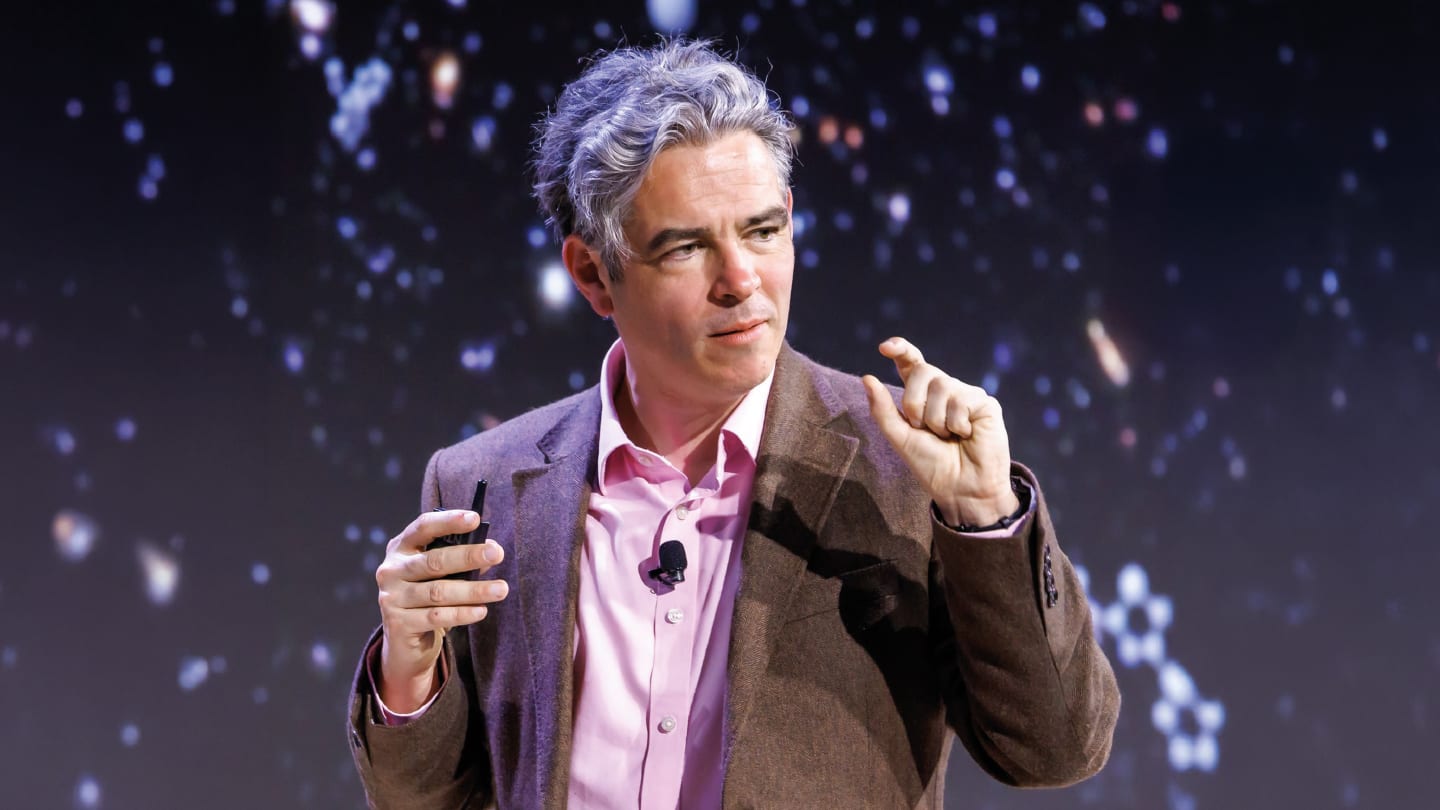
In the search for extraterrestrial life, one problem looms large: we don’t yet have a universal, measurable definition of what life actually is. Traditional biosignatures – oxygen, organics, isotopic ratios – depend heavily on Earth-centric assumptions and can arise through abiotic processes.
To move beyond that limitation, researchers at the University of Glasgow and Arizona State University have developed a new, physics-based approach called Assembly Theory, which quantifies how much “construction effort” is required to build a molecule. Every molecule can, in principle, be assembled step-by-step from smaller building blocks. The number of steps needed – the assembly index – reflects the molecule’s complexity. Simple molecules form easily through random chemistry, but complex ones, produced in large numbers, are statistically unlikely without a guiding process such as life.
Using mass spectrometry, the team has shown how Assembly Theory can quantitatively identify molecules bearing the imprint of selection and memory – the hallmarks of life – paving the way for onboard detection tools on future missions to Mars, Europa, and Titan. Here, lead author Leroy Cronin discusses how the approach could reshape the search for life beyond Earth – and redefine how we think about complexity, causation, and evolution.
First and foremost, what is molecular assembly?
Molecular assembly is a way of measuring how much construction effort or causation is required to create a molecule. In Assembly Theory, every molecule can be built up step-by-step from smaller building blocks; the assembly index is the minimum number of joining steps required to construct it.
Molecules made by non-living chemistry tend to be simple and have low assembly indices because random processes rarely produce complex, multi-step structures. Life, however, builds molecules through recursive, information-driven processes – reusing parts, templates, and encoded instructions – making it uniquely capable of producing high-complexity structures. This means the assembly index acts as a biosignature when taken with the copy number. That is, if we detect many identical, high-assembly molecules in a sample (for instance via mass spectrometry), it strongly suggests that a living system, or something with life-like selection and memory, was involved.
What gaps in existing approaches to biosignature detection were you hoping to overcome?
Our aim was to tackle the long-standing issue that there has never been a proper, operational definition of life – nor a general method to recognize it from chemistry alone. Most biosignature approaches rely on context such as the presence of oxygen, organics, or isotopic ratios – all of which can, in principle, arise abiotically. That means we’ve lacked a universal, quantitative way to tell whether a system is alive or life-like, especially when we encounter unfamiliar chemistry beyond Earth.
Assembly Theory fills that space. It defines life in operational terms as a process that produces molecules with histories too complex to have arisen by chance. By quantifying molecular assembly directly from measurable data (like mass spectrometry), we can determine whether a sample shows evidence of selection and memory – the hallmarks of living systems – without requiring prior knowledge on its specific biochemistry.
In essence, Assembly Theory turns the question of whether or not something is alive into a testable measurement, not just a philosophical debate.
What motivated your team to combine mass spectrometry with machine learning in this context?
Our motivation to combine these technologies was entirely practical. Mass spectrometry gives us the detailed fragmentation patterns of molecules, which reflect how they are built, while Assembly Theory provides the ground truth: the conceptual and mathematical basis that links structure to measurable complexity.
Machine learning alone can find correlations, but without a physical theory it has no understanding of why a pattern matters. In our approach, the theory comes first. Assembly Theory shows us which molecular features encode assembly steps and how to quantify them. We then use machine learning as a tool to automate and scale the analysis – for example, to recognize fragmentation patterns or speed up the computation of assembly indices from large datasets.
Was there a key breakthrough or “eureka” moment?
The real “eureka” moment came when we realized there was a clear quantitative cutoff between molecules made by non-living chemistry and those produced by life. After plotting molecular assembly index values across a wide range of samples – from meteorites and simple prebiotic mixtures to biological extracts – a sharp divide emerged. Abiotic systems never produced molecules above a certain assembly threshold, while biological systems routinely did. That separation wasn’t gradual, or statistical noise – it was a distinct boundary, revealing that life occupies a unique region of chemical complexity space.
That discovery was the turning point. It showed that Assembly Theory wasn’t just a conceptual framework, but a testable, predictive model that could be grounded in real data. It was the first time we could measure, directly from a mass spectrum, the moment chemistry had crossed the threshold into biology.
What were the biggest analytical or computational challenges you faced?
The most challenging part was linking the abstract concept of molecular assembly to real, messy experimental data. Mass spectrometry gives us fragmentation patterns, but translating these into a reliable measure of assembly requires mapping every fragment relationship back to possible construction steps. That’s a huge combinatorial problem, as the number of possible assembly paths grows exponentially with molecular size.
We solved this by developing efficient graph-based algorithms informed by Assembly Theory itself, which drastically reduced the search space by identifying shared substructures and recursive motifs. Another challenge came with distinguishing signal from noise in complex spectra. To overcome this, we used large datasets and internal cross-validation to ensure the inferred assembly indices reflected genuine physical meaning.
The breakthrough wasn’t simply a result of computational power – it came from using the theoretical framework to guide and interpret the data. This allowed us to extract authentic assembly information from spectra, rather than settling for superficial correlations.
How does this approach compare with more traditional ways of searching for biosignatures?
Traditional biosignature searches tend to look for specific molecules or environmental conditions, such as lipids, amino acids or atmospheric oxygen. This is because they are strongly associated with life as we know it. The problem is that all of these variables are Earth-centric; they assume life elsewhere uses the same chemistry and metabolic pathways that we do.
Assembly Theory is different because it has no regard for what molecules are made of, only how difficult they were to make. By quantifying molecular complexity directly from mass spectrometry data, we can detect the imprint of selection and memory in chemistry without any prior knowledge of its composition or origin. Experimentally, it’s also far more feasible. It uses standard analytical instruments like mass spectrometers, which can already operate in compact, flight-ready formats for planetary missions. That means we can look for life anywhere, based on first principles rather than familiar biology.
What do you see as the broader implications of this work for space missions and astrobiology?
The broader implications are huge – we can now search for life anywhere in the universe without prior knowledge of its composition. Assembly Theory gives us a universal measurement of molecular complexity that can be applied directly to data from compact, flight-qualified mass spectrometers already used on space missions. That means we can design experiments for Mars, Enceladus, Europa, or exoplanet analogs that aren’t reliant on water, DNA, or amino acids detection. Rather, they measure whether the chemistry in a sample shows evidence of selection and memory – the hallmarks of living systems.
In practical terms, this shifts astrobiology from searching from familiar biochemistry to testing for life as a physical process. It lets us quantify when chemistry has crossed the threshold into biology, using an objective, theory-driven metric that’s experimentally verifiable. Ultimately, this changes the game: we can now design planetary missions that don’t just look for Earth-like life, but for any system that’s alive by the laws of physics.
What are the next steps for your team?
In the short term, with Sara Walker and her team at ASU, we’re expanding Assembly Theory into a fully operational framework for measuring molecular complexity at scale by automating the analysis and integrating it with high-throughput chemistry, as well as developing compact instruments that could fly on future planetary missions.
But that’s the practical side – the deeper implication is that Assembly Theory goes far beyond life detection. It points to a new way of thinking about causation, contingency, and memory in physics. This is important as AT starts to show how information accumulates in matter over time to produce complex, evolving systems. In this view, selection isn’t just a biological phenomenon; it’s a physical process that shapes the universe by preserving and reusing functional structures.
So, while we’re developing Assembly Theory as a tool for astrobiology and digital chemistry today, its true potential is broader: it offers a new physics of selection and evolution, linking chemistry, biology, and information into one coherent framework.
Leroy Cronin is the Regius Professor of Chemistry at the University of Glasgow, UK




